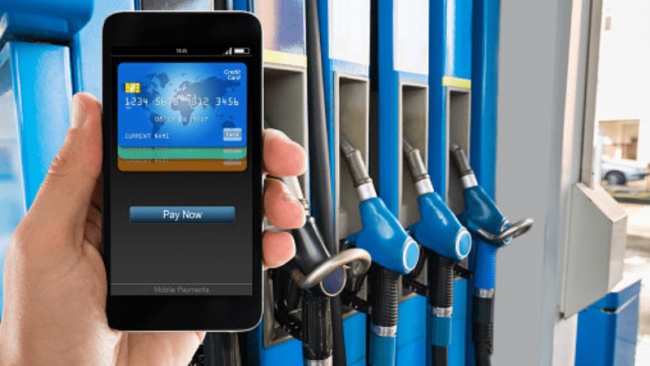Stay connected
Subscribe to our fleet blog and follow us on social media to receive all our fuel and energy industry insights.

Whether your business runs on one vehicle or a small fleet, embracing mobile payments can make life on the go a little bit easier—and more secure. Paying with a mobile wallet is not only quick and convenient but adds additional levels of security to a credit or debit card transaction.
Fueling stations have long been notorious for the ease in which credit card “skimmers”—hidden at fuel pumps—can steal financial information from unsuspecting motorists. Think back to how you swiped your credit card in 2015. When you offered up your mag stripe card at a merchant, that merchant still stored data on a computer that had to communicate with the payment terminal, point of sale, and payment processor. Sensitive data was constantly being circulated, which is one of the major reasons mag stripe technology was vulnerable to fraud.
EMV chip cards and chip readers have made paying by credit or debit card a much more secure process. “According to recent data from Visa,” Jason Oxman, CEO of the Electronic Transaction Association, told Business.com, “EMV cards . . . have reduced counterfeit fraud at the point of sale by 75 percent since their introduction in the U.S.”
Unlike mag stripe cards, each time an EMV card is used to make a payment the card chip creates a unique transaction code that cannot be used again. EMV technology represents a big improvement in card security, but it is also a slower way to pay than mag stripe.
Contactless payment with a mobile wallet, however, is quicker and can be even safer than EMV. For a recent article in USA Today, the reporter did a test at his local Subway shop. The credit card swipe took 12 seconds. Making a mobile payment through the Apple Pay terminal clocked in at 1 second.
Also, when you hold your phone over a card reader, you have two steps of security to protect you from phone thieves who might use your mobile wallet for fraudulent charges. Two-factor authentication means a phone cannot be unlocked without two forms of I.D. The I.D. usually takes the form of:
In addition to setting up two-factor authentication for unlocking your phone, make sure you use a secure Wi-Fi network when adding cards to your mobile wallet.
According to CreditCards.com, when you add a credit or debit card to your wallet, “the card number is stored securely via encryption, which disguises it with a code created by an algorithm. Additionally, the major mobile wallet providers use randomly generated payment tokens to ensure your card information is not seen by merchants or even the wallet providers when you make purchases.”
The most secure way to load your cards into your mobile wallet is while at home, using your own password-protected WiFi network.
In the age of slow EMV chip card readers, making a mobile payment is not only quicker, but adds additional levels of security to a credit or debit card transaction.
Sources:
https://www.wired.com/insights/2014/12/have-online-payments-become-safer-than-offline/
https://www.creditcards.com/credit-card-news/emv-faq-chip-cards-answers-1264.php
Subscribe to our fleet blog and follow us on social media to receive all our fuel and energy industry insights.